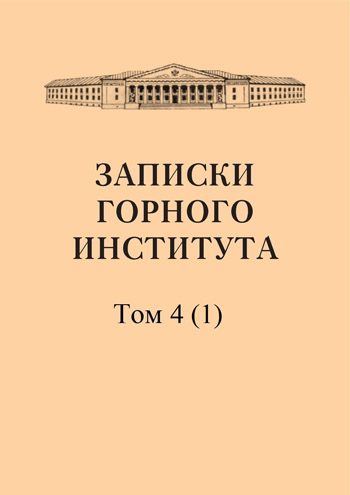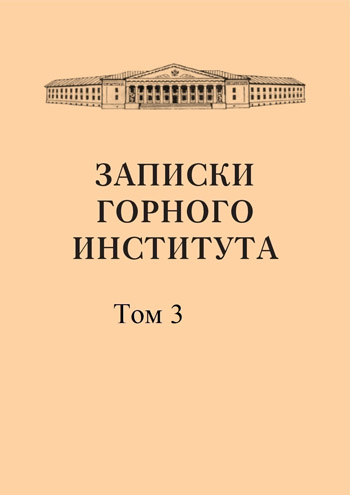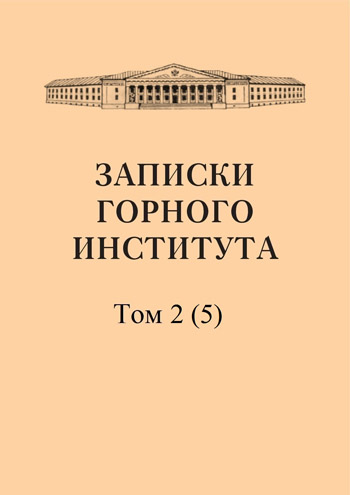-
Date submitted1911-07-19
-
Date accepted1911-09-10
-
Date published1912-01-01
On the integration of first order partial differential equations
- Authors:
- I. P. Dolbnya
We have obtained a homogeneous linear differential equation of the first order with partial derivatives with respect to q. This equation is equivalent to a system of ordinary cumulative differential equations of the first order (see article). This note was found in the postmortem papers of I. P. Dolbnya. Only the calculations of the example remained unfinished.
-
Date submitted1911-07-01
-
Date accepted1911-09-24
-
Date published1912-01-01
I. P. Dolbnya
- Authors:
- N. M. Krylov
In this short essay, devoted primarily to the scientific and pedagogical activities of the late professor, I would first of all like to share with readers the memories of the unforgettable, indelible impression that was made on me, as probably on almost all of his former listeners, in his time lectures.
-
Date submitted1911-07-05
-
Date accepted1911-09-07
-
Date published1912-01-01
About the rocks of a small part of the gold-bearing area in the Semipalatinsk region
- Authors:
- G. G. Kell
This note is the result of a study of the general nature of the primary gold deposit in the summer of 1911 at the mines of the South Siberian Gold Mining Partnership, located on the Laila River, in the Kuludzhunsky volost of the Ust-Kamenogorsk district. The mine area occupies 22 square versts. From it, small tours were made in different directions, mainly to the nearby granite Kaindinskii forest, and thus the entire examined area is approximately 100 square versts. The genesis of gold-bearing quartz veins is being clarified. Their appearance is probably associated with the intrusion of granites. Veins filling cracks, consistent with the strike of rocks and caused by primary dynamic processes, were formed as a result of thermal activity (see article).
-
Date submitted1911-07-25
-
Date accepted1911-09-06
-
Date published1912-01-01
Determining the most advantageous dimensions of a mine field
- Authors:
- L. M. Rutenberg
Within the land plot occupied by a mine, there may be one or more lifting shafts, and each of them serves a certain well-defined part of the seam or suite of mineral deposits. The area of such part of the seam or suite is called a mine field. Like any area, a mine field measured in square units, that is, determined by the product of two linear quantities. Unfortunately, our practicing engineers share their experience very sparingly, and there is no data on this issue in the specialized literature. This article discusses various formula methods for determining the size of a mine field.
-
Date submitted1911-07-20
-
Date accepted1911-09-09
-
Date published1912-01-01
Rocks from the Dashkesan deposit
- Authors:
- S. A. Doktorovich-Grebnitskii
The Dashkesan deposit of iron and cobalt ores is located in Elisavetpol province, 27 versts southwest of the city of Elisavetpol. The most complete description of it (with the exception of the part belonging to Siemens) is given by Weber.
-
Date submitted1911-07-27
-
Date accepted1911-09-24
-
Date published1912-01-01
Deposits of copper and lead ores in the foothills of Mogol-tau and Kara-Mazar in Turkestan
- Authors:
- V. N. Tomilin
In the spring and summer of 1910, on behalf of the Syr-Darya Mining Society, I had to examine the applications and allotments leased by the said company from N.S. Nazarov and located north of the city of Khodzhent within the Khodzhent district. Most of the applications and allotments lie in the foothills of Kara-Mazar ("Black Grave"), the most southwestern spur of the Ala-Tau ridges. Two branches are located in the northwestern foothills of the Mogol-Tau, a separate massif rising on the right bank of the Syr Darya River southwest of the Kara-Mazar mountains.
-
Date submitted1911-07-11
-
Date accepted1911-09-02
-
Date published1912-01-01
About the Laplace series
- Authors:
- N. M. Krylov
The solution to one of the main problems of mathematical physics, namely the Dirichlet problem for a sphere, is reduced, as is known, to the question of expanding the so-called “arbitrary” function of two angles into a series arranged according to the spherical Laplace functions. The possibility of expansion for a function that has two first derivatives has been proven and reasoning similar to that given in our article: “On the theory of trigonometric series”. It is possible to establish the possibility of expansion for a function that satisfies Lipchitz’s condition.
-
Date submitted1911-07-05
-
Date accepted1911-09-29
-
Date published1912-01-01
On the theory of trigonometric series
- Authors:
- N. M. Krylov
When expanding “arbitrary” functions into series using the method of least squares, the coefficients of the series, as is known, are formed according to a very specific law, namely, the law of formation of the coefficient is the one that would take place in the case of uniform convergence of the series, i.e., in other words, the coefficients acquire the form of the so-called Fourier coefficients and the series will be the so-called Fourier series of the expandable functions, in the special case of expansion in trigonometric functions of the form (see article).
-
Date submitted1911-07-20
-
Date accepted1911-09-17
-
Date published1912-01-01
Proof of one Fuchs theorem
- Authors:
- M. N. Akimov
The author provides a proof of one of Fuchs' theorems.
-
Date submitted1911-07-25
-
Date accepted1911-09-30
-
Date published1912-01-01
The zero system as a polar system in the linear prima of conoseconds
- Authors:
- E. S. Fedorov
The plane passing through the polar a and the point, has as its zero point the one at which the polar intersects with the zero plane of the point A. The straight line connecting this point B with point A, like a polar, has a point on polar a as its pole, and both of these points make up conjugate pair on this polar. Each plane, simultaneously tangent to two conoseconds of such a prima, has as its polar a straight line connecting the two points of tangency. If the plane is simultaneously tangent to more than two conoseconds, then it is tangent to all conoseconds of the linear prima, which in this case have one common point of tangency with it and with each other. The zero system is polar with respect to linear primas conoseconds, just as the ordinary polar system follows from a single conosecond.
-
Date submitted1911-07-03
-
Date accepted1911-09-09
-
Date published1912-01-01
New case of probable identity of two substances described as two different
- Authors:
- E. S. Fedorov
Recently I noted the likelihood of the identity of two substances obtained by Anschutz and described one as Benzoylderivat des Amylphenols and the other as Benzoylparatertiaramylphenol. After the publication of this note, I received a kind letter from Prof. Grote, who inquired about this in writing from Prof. Anschutz and received an answer about the actual identity these two substances, despite the enormous differences in the crystallographic constants assigned to their crystals by Messrs. Hartmann and Schwantke. Now I have found in my old notes an indication of the same ratio of two substances, which are given very different chemical formulas, but which in crystallographic terms turn out to be very close.
-
Date submitted1911-07-01
-
Date accepted1911-09-14
-
Date published1912-01-01
Deriving formulas for calculating the faces of the original belt using the zonal calculation system
- Authors:
- E. S. Fedorov
The geometric constants, even for a triclinic crystal, are five angles, the values of which can be easily determined by direct measurement on a universal goniometer, and then no preliminary calculations are needed; using these same five angular values, using the basic formula, the determination of any face, not only measured, but and every possible one, given by the indices of the symbol, is produced, as mentioned, by simple additions and subtractions, but with the exception of the faces located in the original belt itself, that is, the belt of faces a and b. And in the textbook (“A Brief Course in Crystallography”) there is no formulas are given for calculating the angles between the faces in this belt. Here I will give the derivation of this remarkable and extremely simple formula.
-
Date submitted1911-07-28
-
Date accepted1911-09-25
-
Date published1912-01-01
List of works by Professor I. P. Dolbnya in chronological order of their appearance
- Authors:
- Volume 4(1)
The list includes 44 works by Professor I.P. Dolbni and their brief description (see article).
-
Date submitted1911-07-25
-
Date accepted1911-09-14
-
Date published1912-01-01
In memory of I. P. Dolbnya
- Authors:
- Volume 4(1)
On February 2, 1912, the director and ordinary professor of the Mining Institute of Empress Catherine II, Ivan Petrovich Dolbnya, died in the Exchange Hospital, after an operation, at the age of 59 years. After removing the body from the church at the entrance to the institute and... Dr. Director of the Mining Institute prof. I. F. Schroeder made a speech: "... The Council of the Mining Institute of Empress Catherine II, wanting to honor the memory of Ivan Petrovich, decided in today's meeting to characterize scientific and pedagogical activities and share biographical information, as well as the memories of friends of the deceased that could illuminate him personality ".
-
Date submitted1911-07-21
-
Date accepted1911-09-20
-
Date published1912-01-01
Speech given on April 8, 1912 at a meeting of the Council of the Mining Institute of Empress Catherine II
- Authors:
- A. V. Vasil'ev
At the mournful meeting dedicated to the memory of the highly respected Ivan Petrovich Dolbnya, the voice of the Kazan Physico-Mathematical Society, of which the deceased was at one time an active member, cannot but be heard, and, as the former Chairman of this Society, I express deep gratitude to the Council of the Mining Institute for giving me the opportunity to say a few words today.
-
Date submitted1911-07-10
-
Date accepted1911-09-26
-
Date published1912-01-01
Fragments of memories of I. P. Dolbnya
- Authors:
- E. E. Semashkevich
With a particular pleasure I fulfill the desire of the Council of the Mining Institute to share my memories of I.P. Dolbnya. It is not enough to say that I.P. was a talented, skillful teacher who achieved amazing results; he was an exceptional teacher, a teacher-artist who perfectly mastered the secrets of his art. He not only knew how to arouse in the cadets a lively, exciting interest in mathematics, but he managed to awaken a love for it even among the irreconcilable enemies of this “royal” science.
-
Date submitted1911-07-18
-
Date accepted1911-09-08
-
Date published1912-01-01
I. P. Dolbnya. (Life, views, personality)
- Authors:
- N. N. Yakovlev
The strong and vivid image of Ivan Petrovich is still before our eyes; it is still difficult to come to terms with the bitterness that this is only an image, that Ivan Petrovich himself is gone. Having become a director, Ivan Petrovich did not seek to derive any special benefit from this for himself; he divided the director’s apartment into two parts and kept the worst one for himself; for example, he did not seek additional allocations for his assistants. He was a remarkably bright, original and richly gifted person.


